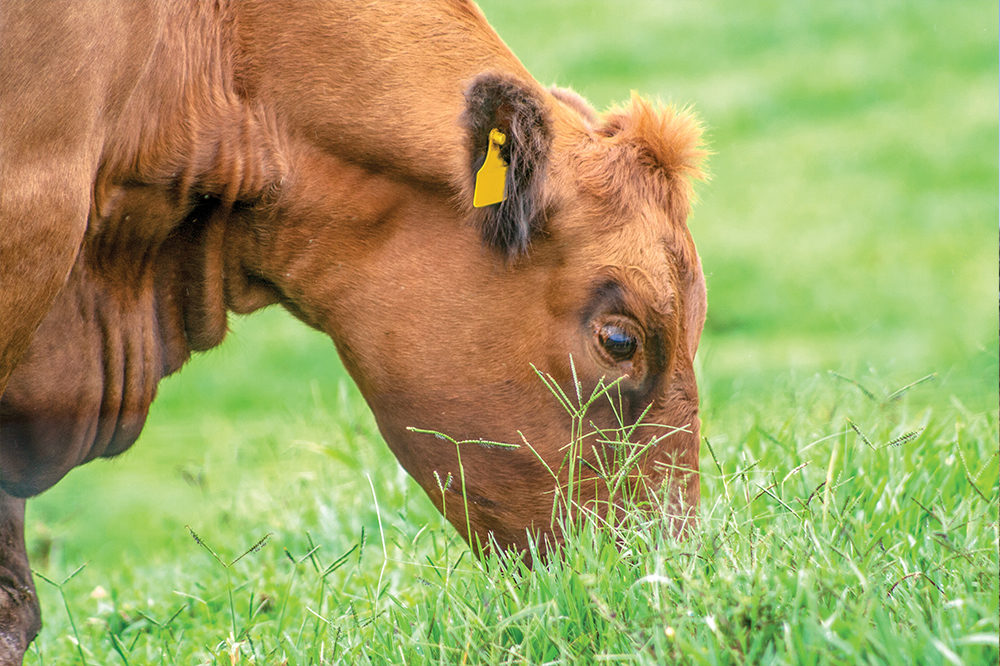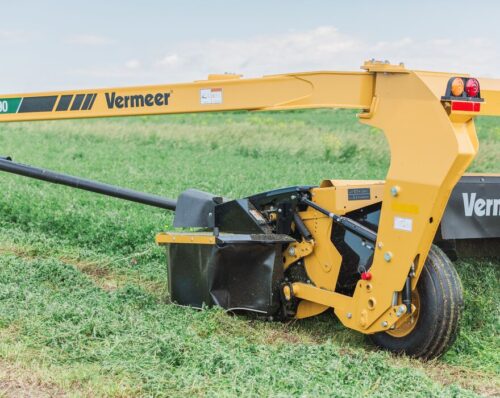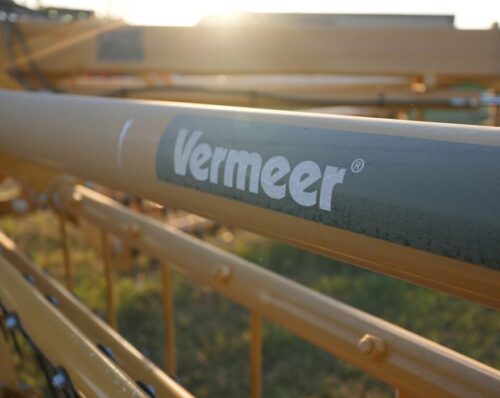
Boost soil health with this trio of practices
May 2019
Start with a thorough understanding of soil health and needs.
If you take care of the soils, they’ll take care of you. That’s an old adage in crop and forage production, and a part of a trio of practices that helps producers ensure future success by attending to the needs of their soils today. The result: long-term productivity and viability. But it takes time and work. Even with the most careful, prudent management, the soils in row crop and forage fields can grow tired. Tillage and other management practices can be detrimental to long-term productivity, whether in soil structure, nutrients or drainage capabilities. Years of cultivation, tillage and other field operations can leave soils lacking normal structure and nutrient profiles, both key characteristics to sustaining productivity.
Breaking that cycle of degradation through crop rotations — sometimes out of cash crops altogether — and year round plant coverage can help sustain the key components of productivity and ensure your soils have what they need to keep producing strong crop yields. If you’re not accustomed to practices like rotational grazing and cover crops, adding these practices to your operation may sound daunting and costly. Yes, it does require different management, and yes, it does carry a cost. But when it comes to ensuring your soils are capable of sustaining bumper crops in the long term, those costs pale in comparison to the potential payback of sustaining soil structures and nutrient profiles.

Do your homework
Just like other production practices it starts by reaching a basic understanding of your needs and determining methods to help you meet those needs, said Steve Groff, farmer and cover crop expert in Holtwood, Pennsylvania.
“Do you understand how your soils function? That’s the most basic question to answer. I always encourage farmers to get practical and find a mentor or learn as much as they can about their soils. Do your homework, think about what you want to accomplish and move forward,” Groff said. “Especially on operations with livestock, there is no question that cover crops will pay. They have a dual purpose of providing soil health benefits and offering a forage crop that can be hayed or grazed. Planting cover crops and doubling them up as a forage source is definitely a viable option.”
Take baby steps
Cover crops, rotational grazing and crop rotations all have a common goal, but they involve different management to make them work. Regardless of whether you use one or all three, it’s important to set realistic, attainable goals if introducing them to your operation for the first time. Groff recommends thinking in terms of 10 percent.
“Start with 10 percent of your acres. If you’re already planting cover crops on 50 percent of your acres, set a goal for 60 percent,” he said. “If you’re already at 100 percent, take it a step further by planting a different mix or planting green. It’s better to take things in baby steps and work your way up. That’s definitely my recommendation for newcomers or those who just want to dip their toe into the water.”
"Cover crops also provide a lot of benefits for soil organic matter. - Steve Groff"
Take nitrogen management, for example. With current crop market prices, any increase in nitrogen fertilizer prices could put a crop near its breakeven price into the red. One specific benefit of cover crops is soil fertility. In some cases, the right cover crop mix can reduce the amount of fertilizer a crop needs, and that has a direct effect on crop revenue potential.
“Cover crops can definitely factor in as a way to retain or make more nitrogen in the soil, especially with legumes. If the price of nitrogen goes up 20 percent, cover crops can definitely factor in, and those who are using them now can reap major cost benefits,” Groff said. “Cover crops also provide a lot of benefits for soil organic matter.”

Rotational grazing
Rotational or “mob” grazing is another practice that, though not new, is seeing a resurgence in popularity because of its soil benefits. Not only is it a way to provide a more consistent grazing source for cattle, it boosts soil conditions by decreasing
erosion potential, pesticide and fertilizer needs and manure runoff. In any rotational grazing system — which can take up to five years to start showing soil health benefits — it’s important to know your soil types to understand how best to keep soil fertility consistent. The animals you’re grazing, how often you’re rotating them to different paddocks to let grazing acres “rest” and how long you’ll be grazing are all factors to consider in managing pasture acres grazed on a rotation and preparing each paddock for grazing.
“To maintain healthy pastures, make sure soil nutrients are returned to the soil at the same rate they are removed. Once soil nutrients are at optimal levels, nutrients should cycle naturally in a well-managed pasture through nitrogen fixation from legumes and livestock excrement. Since grazing animals normally return 60-80 percent of available pasture nutrients (providing their manure is returned to the pasture), some additional fertilization will probably be required, depending on your management and supplements being fed to animals,” according to a report from the USDA Natural Resources Conservation Service which was produced by a team led by former University of Wisconsin Extension Agronomist Dan Undersander. “Pastures rotationally grazed by dairy cows receiving high levels of supplemental feeding can actually increase in phosphorus and potassium levels and thus not need maintenance fertilization.”
Rotational grazing can be time-intensive from a management standpoint. In addition to making sure grazing cattle don’t consume plants that can be harmful to their health, it’s important to move animals when they’re ready. Undersander and his team recommend keeping legume consumption balanced with other grasses to avoid issues like bloat. Be ready to move cattle fairly frequently so feeding patterns stay consistent and animals avoid gorging on a new forage source when moved into a new paddock.
Crop rotations
Though they’re already a strategic part of how the vast majority of U.S. farmers manage their crop acres, crop rotations have long been seen as a way for complementary crops to work together to maximize yield potential in successive years on the same acres.
Rotating the right crops is critical to maintaining soil productivity. Like cover crops, the right crop rotations can help offset the effects of tillage on soil composition, helping eliminate crusting, clodding and hydraulic stress. Soil compaction, erosion and shortened crop yields are consequences of these conditions, making the right rotation important to maintaining soil tilth. Effective crop rotations help manage soil health through processes like nitrogen fixation that help keep organic and inorganic nutrients balanced in the soil. Successful crop rotations keep those nutrients in the right balance to maintain productivity year after year, though it depends on more than just planting complementary crops in successive years.
"Effective crop rotations help manage soil health through processes like nitrogen fixation that help keep organic and inorganic nutrients balanced in the soil. "
“Diverse crop rotations will help break up soilborne pest and disease life cycles, improving crop health. Rotations can also assist in managing weeds,” according to a university report from Charles White, Penn State Extension assistant professor of soil fertility and nutrient management.
“By growing diverse crops in time and space, pests that thrive within a certain crop are not given a chance to build their populations over time. Rotating crops can also help reduce nutrient excesses.”

Cover crops
Groff uses the terms “cover crops” and “soil health” interchangeably. And for good reason: Cover crops make up about half of the practices and influences comprising the movement toward improved soil health. Groff is in a good position to speak to the benefits of cover crops; he’s been planting them on his Pennsylvania farm for around 20 years, and he’s discovered myriad benefits of different seed mixtures ranging from soil fertility to weed control. It’s an important time for farmers to be focusing on practices like cover crops that not only benefit soil health, but also help meet evolving marketplace demands.
“You have to understand the complexity of how these plants and the soils interact to successfully manage a cover crop,” Groff said. “Treat your cover crops like your cash crops. That really is the foundation of making cover crops pay.” Once you’ve reached a basic understanding of your soil nutrients and structure, identify the right mix of cover crops to plant. Grasses, brassicas and legumes are just a few of the plant types that help cover crops meet specific soil nutrient needs. Determining the right mix for your acres requires both this understanding and what you want to achieve.
“Try using cereal rye as a cover crop in the fall, because it works just about everywhere. If you no-till plant soybeans into that rye in the spring, plant when the rye is still green. It’s easy to plant soybeans into cereal rye. It’s more difficult with corn. I caution people planting corn into cereal rye because you have to understand more facets to make that work. Planting corn into a radish/oat mix is easier. That’s my recommendation for newcomers or people who want to put their toe in the water,” Groff said. “The nice thing about cereal rye in soybeans is that it helps to control herbicide-resistant weeds. That’s consistent around the nation. We’re helping to control herbicide-resistant weeds, particularly in soybeans, when we no-till soybeans into cereal rye. When you plant cereal rye in front of soybeans, it will out-compete fall-germinated marestail. That’s one of the most prevalent herbicide resistant weeds. It can help smother Palmer amaranth in the spring. Rye has an allelopathic effect. It hinders the germination of small-seeded broadleaves, which is exactly what these weeds are. There’s a natural herbicide in there.”
Cost concerns
In some cases, practices like cover crops may not show immediate financial returns. Though there are costs associated with these types of practices, it’s important to identify your specific goals and be attentive to different ways you’re accomplishing them, even if those results don’t immediately show up on a balance sheet. That sometimes requires a longer-term approach, Groff said.
“We are making a long-term investment in our soils. Some years, cover crops will pay, and some years they won’t. Think about them in a 10-year plan. You will start to see how soil health improves over time,” he said. “Start with a plan, do what you need to do in year-one and keep moving forward.”






